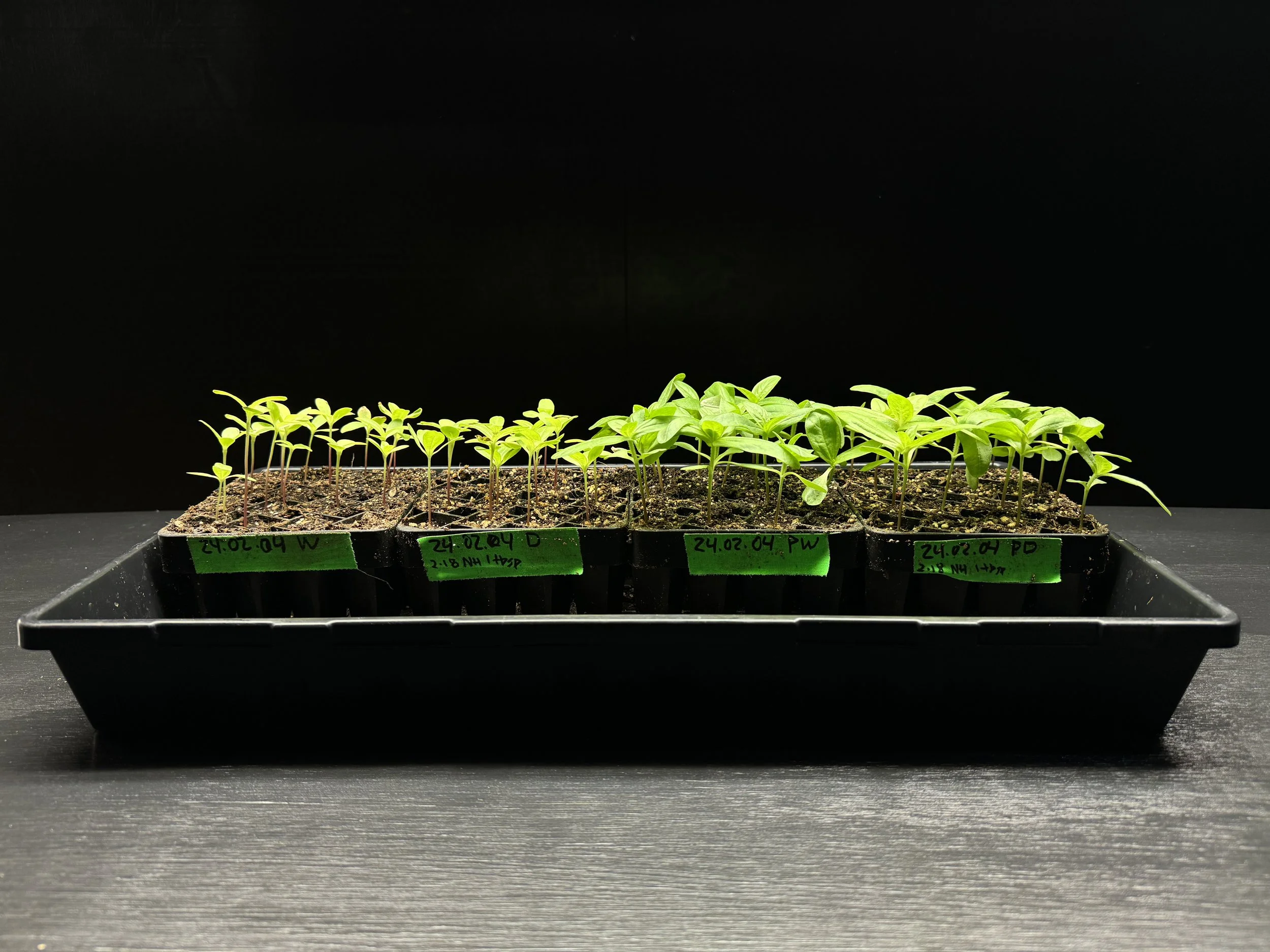Seedling soil testing
In my quest to make the best soil mix for my seedlings I keep trying new mixes. The photo above shows zinnia seedlings at 3 weeks old planted in the same base mix, but two of the 4 trays had the addition of Pittmoss. I also tried starting 2 trays dry and two wet when I planted the seedlings.
Here’s the soil mix I used (from left tray to right tray):
Tray 1: 2 parts: coco. 1 part: worm castings, perlite, vermiculite. Soil normal moisture
Tray 2: 2 parts: coco. 1 part: worm castings, perlite, vermiculite. Soil half normal moisture
Tray 3: 2 parts: coco, Pittmoss. 1 part: worm castings, perlite, vermiculite. Soil normal moisture
Tray 4: 2 parts: coco, Pittmoss. 1 part: worm castings, perlite, vermiculite. Soil half normal moisture
D= Dry mix half water
W= Wet mix normal water
P= additional 2 parts Pittmoss
This test had some interesting results based on two things: water and the addition of Pittmoss. I was surprised that the amount of water in the mix when they were first sown had such a drastic impact on the plants growth. In the photos above you can see the difference in leaf color and size in tray 3. This one had the additional Pittmoss and was moist from the start. I suspect that the addition of Pittmoss is helping in two ways: more water an a tiny bit of nutrition. It has NPK: N (0.176%) P (0.100%) K (0.024%). Which isn’t much considering that it’s about 28% of the mix. The trays were all given just water until the 2nd week. Tray 2 & 4 were given Neptune's Harvest fish and seaweed fertilizer at 1 tablespoon per gallon of water. So far this hasn’t had much of an effect after one week. The mix in tray 3 is similar to what I used last year to grow all my plants, but I’m still trying to fine tune it.


